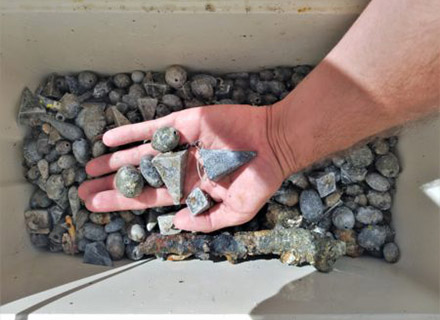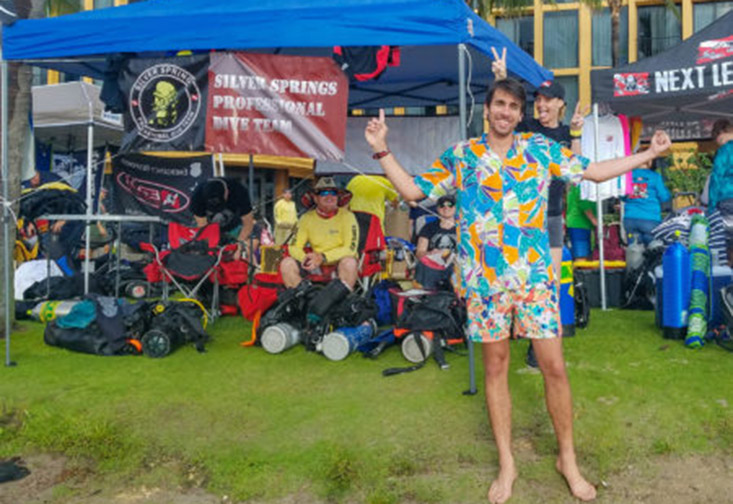More than 600 divers banded together last month for a Guinness World Record-breaking operation to remove more than 3,200 pounds of trash from the sea floor. USF St. Petersburg graduate student Chase Nawrocki was part of the underwater cleanup at Deerfield Beach, Fla., joining divers from as far away as South America and Europe.
Nawrocki, who is a master diver, is pursuing an MBA and is scheduled to graduate in December. He chose USFSP because of the strength and low cost of the master’s program, the job opportunities in the Tampa Bay region and quality of life on and off campus, which includes diving whenever he gets the chance.
We sat down with Nawrocki to hear about this incredible experience and what he learned from it.
How did you hear about this opportunity?
I heard about this record-setting dive about six months ago. I am part of a dive organization
out of Ocala, FL., where we go into Silver Spring State Park and clean the glass bottom
boat and around main spring, and I heard about it through members of this group. The
dive shop that organized this event (Dixie Divers) wanted to make an environmental
impact and also tried to set a record in the process. As long as they got more than
615 divers at the event, they would have broken the record, and we got 633 divers
there.
What was the experience like? Where were you when you dove and picked up trash?
I was in the water probably for close to two hours. It took about 10 minutes to swim
out to where garbage really started to accumulate. We picked up trash around the International
Fishing Pier at Deerfield Beach, which extends 300 feet out from shore. Largely we
were diving in between 10 and 20 feet of water. The trash really starts about halfway
down on the Pier. That is where people go to fish and have lunch.
What trash did you find and how much of it was there?
There was everything from chairs to an umbrella, and then more common items like fishing
rods, beer and soda cans and fishing line. I myself collected a ton of small lead
weights that you normally put on fishing line. I must have had easily more than 100
pounds and in fact, this didn’t get counted into the final tally of 3,200 pounds because
it didn’t get turned in for the weighing in time. So really that number is a low estimate
and we likely collected hundreds more pounds of trash.

How did you collect the trash while scuba diving?
They had hundreds of buckets that were tied to the pier and had five-pound weights
at the bottom so the buckets could easily lower to the sea floor. Each bucket had
holes drilled into it, so when you took them out of the water, they would drain fast
and be lighter to carry. Each diver would fill these buckets about halfway when they
were on the sea floor and then tug on the rope so those on the pier could haul them
up.
What did you learn from this record-setting dive?
We have beach cleanups all the time, but hardly any underwater cleanups, and we know
that trash must be there as well. And this experience really confirmed what I and
many others already knew: there is a lot of trash down there. Also, the water at Deerfield
Beach is very blue. The water clarity is great, and we don’t associate clear water
with trash, but there was a lot of trash below.
Nawrocki said the group is planning to continue doing dive events in the future and possibly to break the record again next year. Their hope is that underwater cleanups will occur more frequently and become as common as beach cleanups.
